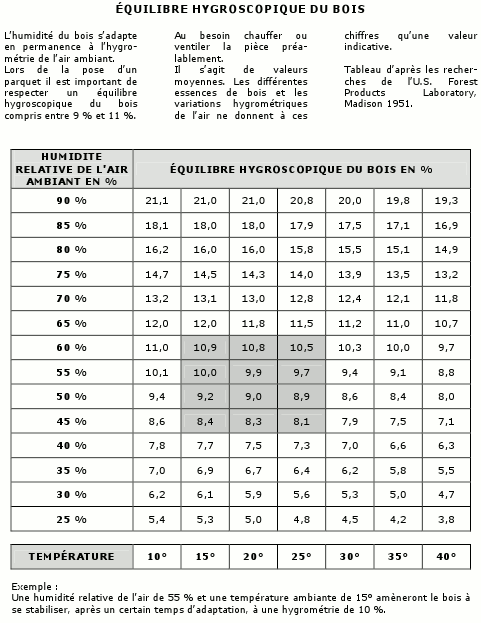aerialcastor wrote:A small summary table:
http://www.arbao.fr/Docs/ARBAOEquilibreHygroscopiquedubois.pdf
mirror: https://www.econologie.info/share/partag ... ukzJQQ.pdf
Excellent this doc, I put it in image for those who have not yet acrobat or who are too lazy to click on the link:

So very interesting doc I did not know, you see Ahmed he shows that we can easily be under 15% humidity, even at 10 ° C. On the other hand the "after a certain time" is rather vague ... shame because by adding the drying times according to% RH and T °, then the doc would have just been perfect!
Practical example: our wood is stored in our garage at 55% -60% humidity (low because bare ytong walls which "draw" the humidity outwards) and therefore after a "certain time" (or a " certain weather "?) at an average of 15 ° C we can very well have firewood around 10% humidity.
ps: I just made it a subject to more easily find it https://www.econologie.com/forums/sechage-du ... 10065.html




